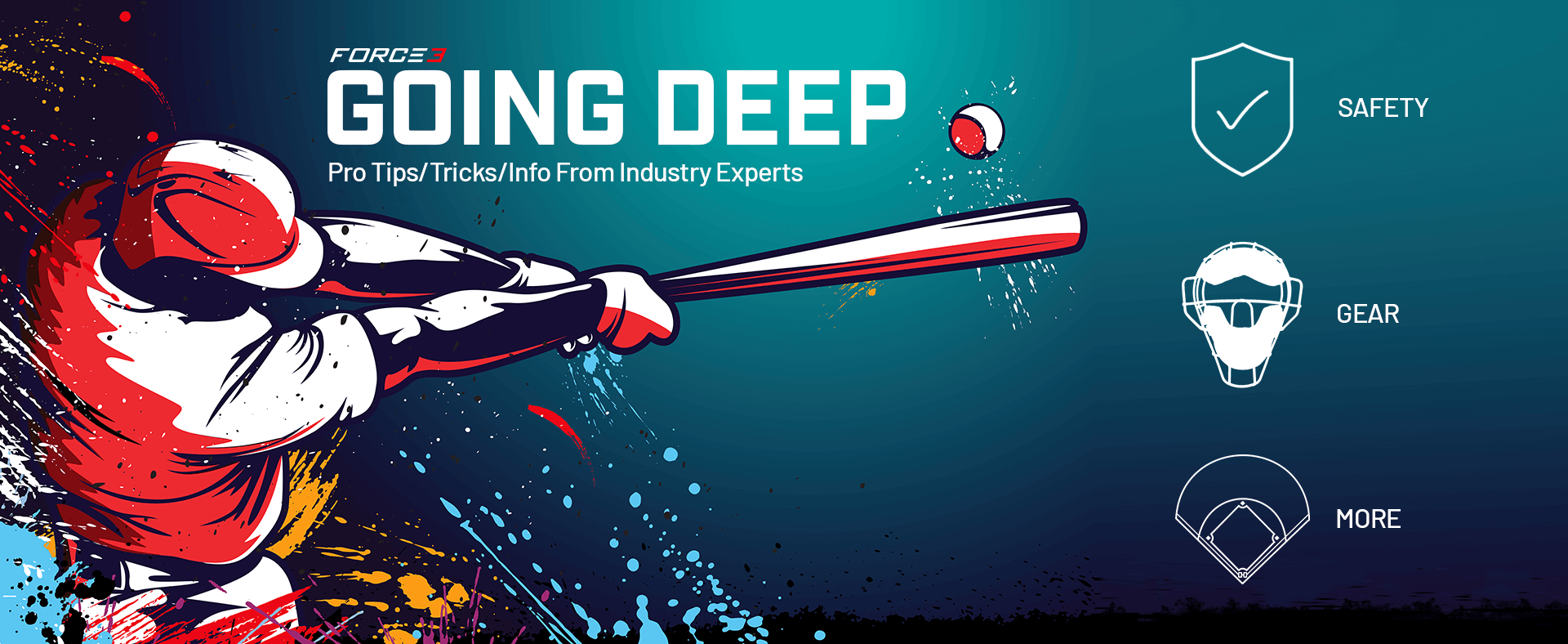Product added to cart
- Home
- Blog - Force3 Pro Gear
- In The News
- EVER WONDER HOW THAT CATCHER’S MASK WORKS? IT’S SHOCKING.


By Ken Davidoff
NY Post, September 19, 2021
The inspiration came from, as Jason Klein described it, “the absolute kill shot.”
But don’t let me steal the moment any further from Klein, who was working as a minor league umpire in 2007 when this happened:
“I know exactly where I was, in North Carolina with the Durham Bulls. Frankly, I had a good catcher in front of me that I trusted, but I got hit (by a foul ball) right in the chin. It’s the absolute kill shot.
“I was feeling around, I thought my teeth were knocked out. I thought I was bleeding. It was bad. It took a while to get myself up and going.
“I thought, ‘This is crazy. This piece of equipment has not changed since I was a Little League umpire. It hasn’t changed through the course of time.’”
Klein, who grew up in Orange, Conn., never worked as an umpire in a regular-season major league game, though he saw some spring-training action; he worked the minors from 2000 through 2009. Nevertheless, his impact on the game surpasses most of those who climbed higher on the umpiring ladder. After all, how many of those folks can say their efforts are recognized in the Baseball Hall of Fame?
When Klein ended his career as an umpire, he completed the work that began the day of that kill shot: He revolutionized the catcher’s mask. The Force3 Defender mask, which utilizes springs to absorb impacts and reduce head injuries, is used by so many catchers at all levels that in July, the Major League Baseball Players Association declared it an “Official Catcher’s Mask Partner of MLB Players, Inc.,” which is the business arm of the MLBPA.
And in the Hall, the first Force3 Defender used in a big-league game, by the Braves’ Tyler Flowers (now retired) in 2016, is currently on display and is part of the Hall’s permanent collection.
Klein’s only background in engineering is that his father is one. Perhaps that osmosis enabled him to create a revolution of sorts through the company he founded, Force3 Pro Gear.
“In order to make this work, I needed something that would be very efficient at absorbing energy. Springs are very efficient at absorbing energy,” he explained. “If they can have a building not collapse over an earthquake, why can’t we develop a mask that can not make your head move around (when it gets hit)?”
The venture took some time — he spent time testing the mask against balls traveling 90 miles per hour — and it hit a temporary setback in 2014 when catcher David Ross, then with the Red Sox (and now the Cubs’ manager), told Klein he would wear the mask in a Grapefruit League game, only to back off because, as he told Klein, he could see the springs in his peripheral vision when the opponent had a runner on third. That compelled Klein to make a critical change to the mask’s design, from having four spring assemblies to three. Two years later, Flowers wore it in a big-league game.
“I was really intrigued by it,” Flowers said in a telephone interview. “The car analogy made sense: Why would you not put a suspension system on the mask and protect your brain?”
Though Flowers never was diagnosed with a concussion during his 12-year career, he recalled a few occasions when he took a foul ball to his jaw and “couldn’t have a steak for weeks after,” so dramatic was the impact. That issue ceased upon wearing the Force3 mask. He gave up a deal with his previous mask supplier, which paid him to wear its gear, and accepted an ownership share in Force3 rather than a payment because he believed in the product. The White Sox’s Yasmani Grandal took a similar equity deal. Now, both Flowers and Grandal are investors in the company. In all, about half of the catchers in the majors now use the Defender.
“I’ve never heard of anyone wearing it who didn’t want to keep going with it,” Flowers said.
The official designation by the Players Association means that Klein and the company’s CEO, Steven Goldsmith, are free to talk about Force3 products (they also make chest protectors and shin guards) with any and all players; prior to that, strict limits were in place. According to Goldsmith, Klein has established seven patents on mask design. The company also sells models for softball infielders and — Klein hasn’t forgotten his roots — the mask works for umpires, too.
Klein has come a long way since suffering that kill shot, which becomes the real-life equivalent of Doc Brown’s bathroom injury that struck him with the idea for the flux capacitor in “Back to the Future.” Catchers’ and umpires’ futures look to be much safer thanks to Klein’s baseball misfortune.